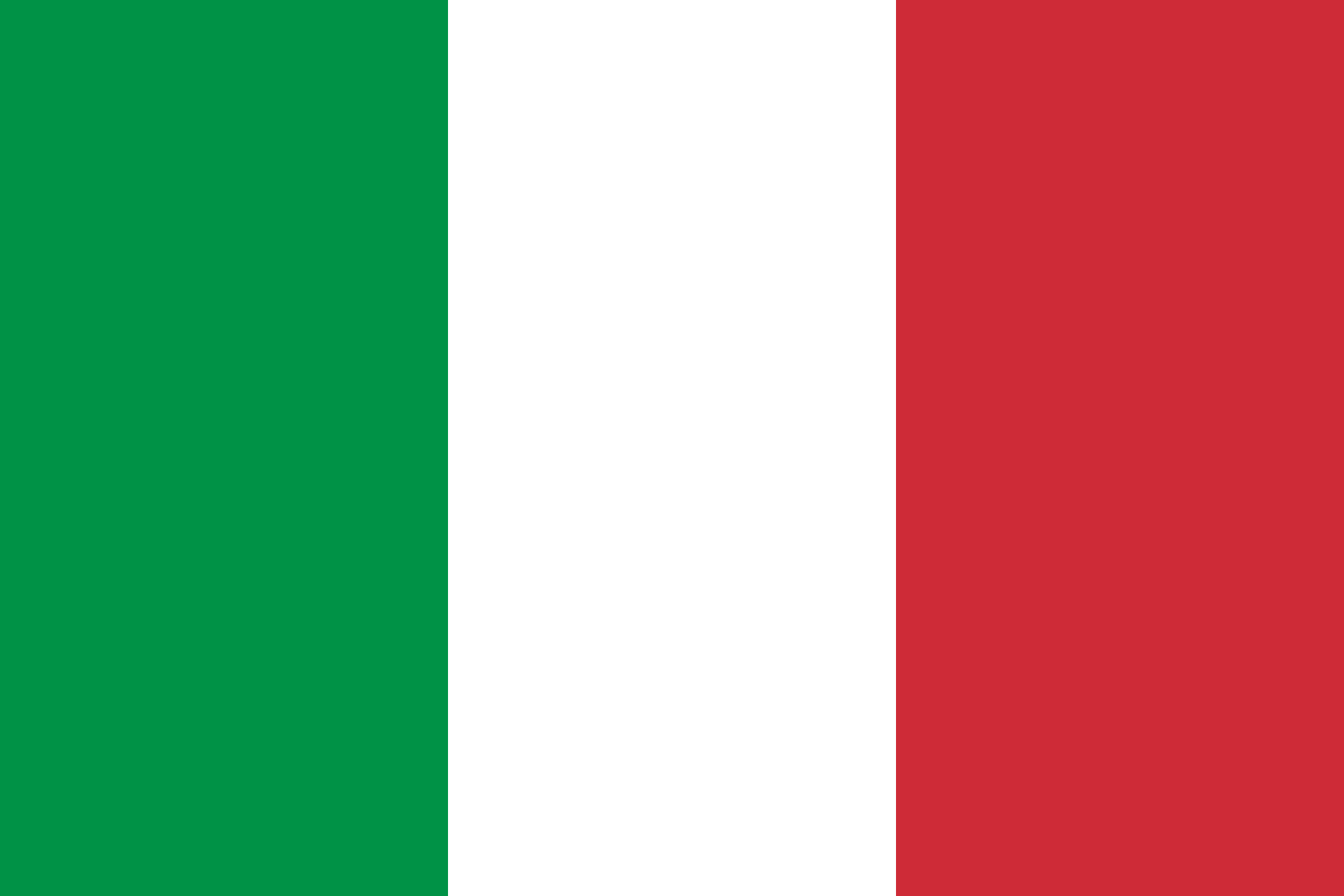National Symbols: Flag Details
Date First Used
June 19, 1946
Nickname(s)
“Il Tricolore” (The Tricolor)
Design Elements
A tricolor featuring vertical, equal-sized pales of green (at the hoist), white and red
Symbols: None
Colors: There are no official meanings attributed to the colors of the Italian flag, but conventional wisdom stipulates the green represents the country's plains and hills, white represents the snow-capped Alps and red stands for the blood spilled in the wars of Italian Independence. In a more religious interpretation, green represents hope, white represents faith and red represents charity (the three theological virtues).
Proportions: 2:3
Variations: The Italian naval ensign is the national flag defaced with the arms of the Marina Militare.
History
Although it spans only a little more than two centuries, the history of the Italian Tricolor is an epic one. The first official tricolor Italiano was adopted in Reggio Emilia on January 7, 1797, by the 14th Parliament of the Cispadane Republic. This was probably taken from the flag of the Lombardy Legion, which carried banners bearing red and white originating from the flag of Milan and green taken from the uniform of the civic guard. The flag consisted of a horizontally striped square (with red uppermost) and an emblem composed of a garland of laurel decorated with a trophy of arms and four arrows, representing the four provinces that formed the Republic. The Cisalpine Republic adopted the vertical square tricolor without badge in 1798. That flag was maintained until 1802, when the republic was renamed the Italian Republic.
In 1799, the independent Republic of Lucca came under French influence and adopted a horizontal tricolor with green uppermost; this lasted until 1801. In 1805, after Napoleon had crowned himself first French Emperor, the Italian Republic was transformed into the Kingdom of Italy, under his direct rule. The flag was that of the Republic in rectangular form, charged with the golden Napoleonic eagle. This remained in use until the defeat of Napoleon in 1814. Between 1848 and 1861, a sequence of events led to the independence and unification of much of Italy. During this period, the tricolor became the symbol that united the Italian efforts for freedom and independence. The Italian tricolor as we know it today was officially adopted on January 1, 1948, with the promulgation of the republican constitution and the end of the reign of the House of Savoy. It has remained basically unchanged since then, save for a recent controversy over proper color shades (see Legends, Controversies, and Trivia below).
Proper Uses
The Italian government takes the treatment of the tricolor very seriously. Chapter II, Article 292 of the Italian penal code states that “Whoever vilifies the national flag or other emblem of the State shall be punished by imprisonment of from one to three years.” The provision goes on to apply the same punishment to “anyone who vilifies the national colors represented on an item other than the flag.” According to Article 292b, “the punishment shall increase if the act was committed by a citizen in a Foreign territory.”
Legends, Controversies, and Trivia
The civil and state flag of the short-lived Italian Social Republic, or Republic of Salò as it was commonly known, was identical to the flag of the modern Italian Republic. However, that flag was rarely seen during the period. Instead, the war flag, charged with a silver eagle clutching fasci littori (literally, “bundles of the lictors;” lictors originally referred to Roman bodyguards), figured prominently in the propaganda of that time. Italian fascism derived its name from the fasces, which symbolized imperium, or power and authority, in ancient Rome. Roman legions had carried the aquila, or eagle, as a military insignia.
In 2003, the authentic colors of the Italian national flag were officially declared by the government for the first time. A “flag flap” ensued when some Italian opposition leaders accused Prime Minister Silvio Berlusconi of “tinkering” with the flag by introducing “designer” colors in place of more traditional hues. Green Party president Alfonso Pecoraro Scanio even accused Berlusconi of launching a “chromatic coup d’etat ” after the prime minister displayed a re-imagined flag outside his office. Berlusconi accused the opposition of diversionary political tactics. Eventually, the government claimed Berlusconi’s flag was simply a “technical error” on the part of the flag's manufacturer. The chosen flag colors were later amended, and as of 2006, they are described as “fern green,” “bright white,” and “flame scarlet” Pantone textile colors.
Firebrand Italian Northern League party leader Umberto Bossi received a 16-month suspended sentence for declaring at a 1997 rally that the Italian flag was best used as toilet paper. (Bossi once wanted to create a separate nation in the north of Italy called Padania, and the Northern League has long flirted with the idea of succession.)
Copyright © 1993—2025 World Trade Press. All rights reserved.

 Italy
Italy 